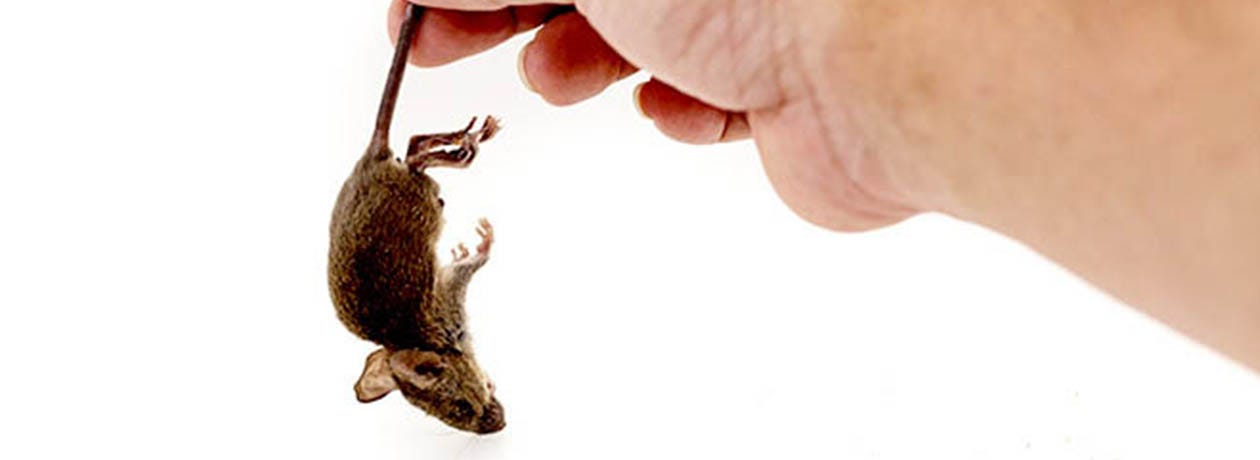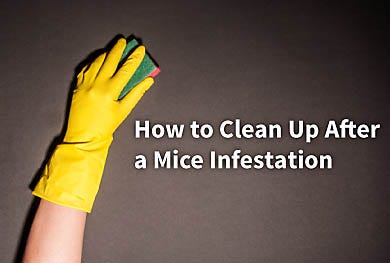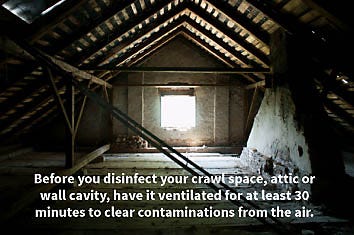How to Clean Up a Mouse Nest

Rodents carry infectious viruses and because of that it's crucial to exercise caution when a customer seeks to remove rodent nests, rat droppings or mouse poop from a formerly infested area. Therefore, any mouse or rat infestation cleanup should only be done while wearing protective gear and using a disinfectant formula.
That cleanup, however, can’t happen until the rodent problem is dealt with by trapping the mice and rats.
How To Exterminate Rats And Mice
A single mouse or rat is one too many, but where one rodent treads, others are likely to follow. That's why your customers rely on you to help them get the best products for rodent removal. The moment they suspect that a critter has entered their home or business, advise them to deploy Victor® glue trays and Victor® snap traps. Other options include electronic mouse traps or electronic rat traps from Victor®. These simple devices kill rodents instantaneously.
Cleaning is Necessary
Why is it so important to be careful during the cleanup of a rodent infestation? Rodent-spawned infections have been responsible for at least 10 million fatalities since the dawn of the 20th century. The most famous plague, the Black Death, was spread by the fleas on rats and caused 200 million deaths around Europe.
Even today, rodents harbor various diseases that are infectious to humans, including:
- Hantavirus: Originating from deer mice; causes flu symptoms and problems in the kidneys and lungs.
- Lyme disease: Spread by rodent ticks; symptoms include fevers and skin lesions.
- Salmonella: Borne from rodent excrement; affects the digestive system and is known to ruin 20 percent of the world's annual food supply.
- Typhus: Spread by portside rodents and transmitted through flea bites; has been known to cause fever, rash and lung problems.
With these in mind, it’s vital to advise your customers on how to properly clean up any infestation they uncover.
First off, your customers need to ensure that the rodents have been completely eliminated from the area that must be cleaned. Before cleaning, advise them to:
- Set Victor® mouse and rat traps and check them daily.
- Continue to trap until a week passes with no further rodent catches.
- Expose the area to fresh air.
- Do not ventilate with a fan, sweep with a broom or vacuum the area. They do not want dangerous particles blown into the air.

How To Clean Up Mouse Droppings
To clear away the evidence of a mouse infestation, advise your customer to moisten all debris with a bleach solution – 10 percent bleach to 90 percent water – and then wipe it clean.
The goal is to eliminate all the germs present and while destroying the smells that attracted rodents in the first place.
To prepare to clean, your customers should:
- Protect hands by wearing latex or rubber gloves.
- Spray the rat droppings or mice poop with the disinfectant; allow it to saturate for at least five minutes.
- Remove the excrement with paper towels and dispose of everything in plastic garbage bags.
- Scrub away paw prints or streaks.
- Machine wash all fabrics.
- Once everything is cleaned, reapply the disinfectant over the area and any neighboring spots that may have been infected by the rodents’ presence.
- Dispense of gloves.
- Clean hands with soap and/or rubbing alcohol.
How To Remove Dead Rats And Mice
During cleaning, a rodent carcass may be discovered. To remove dead rats and mice, it’s important to double up on the sanitation steps. Armed with disinfectant and rubber or latex gloves, consumers should:
- Put on gloves and prepare cleaning formula (bleach and water).
- Spray the dead rat or mouse and its immediate surroundings with the bleach/water formula.
- Leave it untouched for five minutes
- Dispose of rodent's body in a plastic bag and take outside.
- Dispose of the gloves and wash hands thoroughly.
How To Clean Up Mouse Droppings In An Outbuilding
Before cleaning up after rodents in one of the outbuildings, air out the structure for at least 30 minutes. With gloves on and the disinfectant ready:
- Spray the areas with disinfectant to the point of saturation and then wait 5 minutes.
- Clean up the mice droppings, rat poop, nest fragments and rodent carcasses. Wipe away all debris.
- Dispense of rodents, defecations and dirty towels in plastic bags.
- Spray the floors and surrounding walls/trimmings with disinfectant again and mop them clean.
- Clean tables, countertops, desks, cabinets or any other furnishings with rodent prints.
- Dispose of gloves. Wash hands thoroughly.
- Work to block entrances that can be exploited by the rodent.
- Trim vegetation and remove debris that has accumulated outside the building.
How To Disinfect Household Items After A Rodent Infestation
Follow these tips to clean household items:
- Always use rubber or latex gloves when gathering contaminated items.
- Machine-wash fabric items in hot water, then place the fabrics and other washables into your dryer and spin dry them at a high temperature; anything above 115 degrees should kill off any lingering hantaviruses.
- Infected rugs, carpets and furniture will require the use of professional-grade steam cleaners with shampoo or disinfectant.
- If rodents have contaminated books, magazines or documents – leave these outside in the heat for a day, or store in a disinfected indoor area for at least a week. Ultraviolet rays kill hantaviruses, which can otherwise linger on surfaces for up to three days. Wear gloves while handling these items that you believe are infected. On some hardback books, it wouldn't hurt to wipe the front and back covers clean with a formula-moistened washcloth.
- Disinfect and wipe down any items that may contain animal smells, pawprints or odd stains.

How To Get Rid Of Rat or Mouse Urine Smell
It takes more work to clean an infestation in the hidden areas of a home – attics, basements, crawl spaces, wall cavities – because these are the places where rodents are most likely to dwell.
After eliminating the rodent population from these areas, your customers can focus on clean up. Your advice should be as follows:
- Ventilate the area well for at least 30 minutes.
- Don rubber or latex gloves and a dust mask to block out particles from insulation, dust and mold. (It won't filter out hantaviruses, though.)
- Spray bleach/water formula over urine stains, droppings and nest particles. Allow these areas to saturate; this will kill off hantaviruses.
- With paper towels, wipe the areas clean and dispose of the rodent remnants in plastic garbage bags.
- Spray the disinfectant formula on the floor, trimmings and walls around the infected area and clean with a mop.
- Remove insulation sheets wherever rats or mice have tread; place the sheets in plastic garbage bags.
- Pull contaminated boxes and other items outside. Set all items out to soak in the sun's UV rays.
- Wipe the outsides of the boxes with disinfectant. If the items are washable, follow the steps outlined earlier.
- If any box contents consist of old clothes, it’s best to discard them.
- Throw out any cardboard boxes touched by rodent droppings or urine.
- Clean/disinfect any old, stored-away furniture.
- Inspect the walls, ducts and trimmings for cracks, gaps or any other possible rodent entryways. Cover these openings with sealant or mesh wire. Consider paving crawl spaces under the structure.
